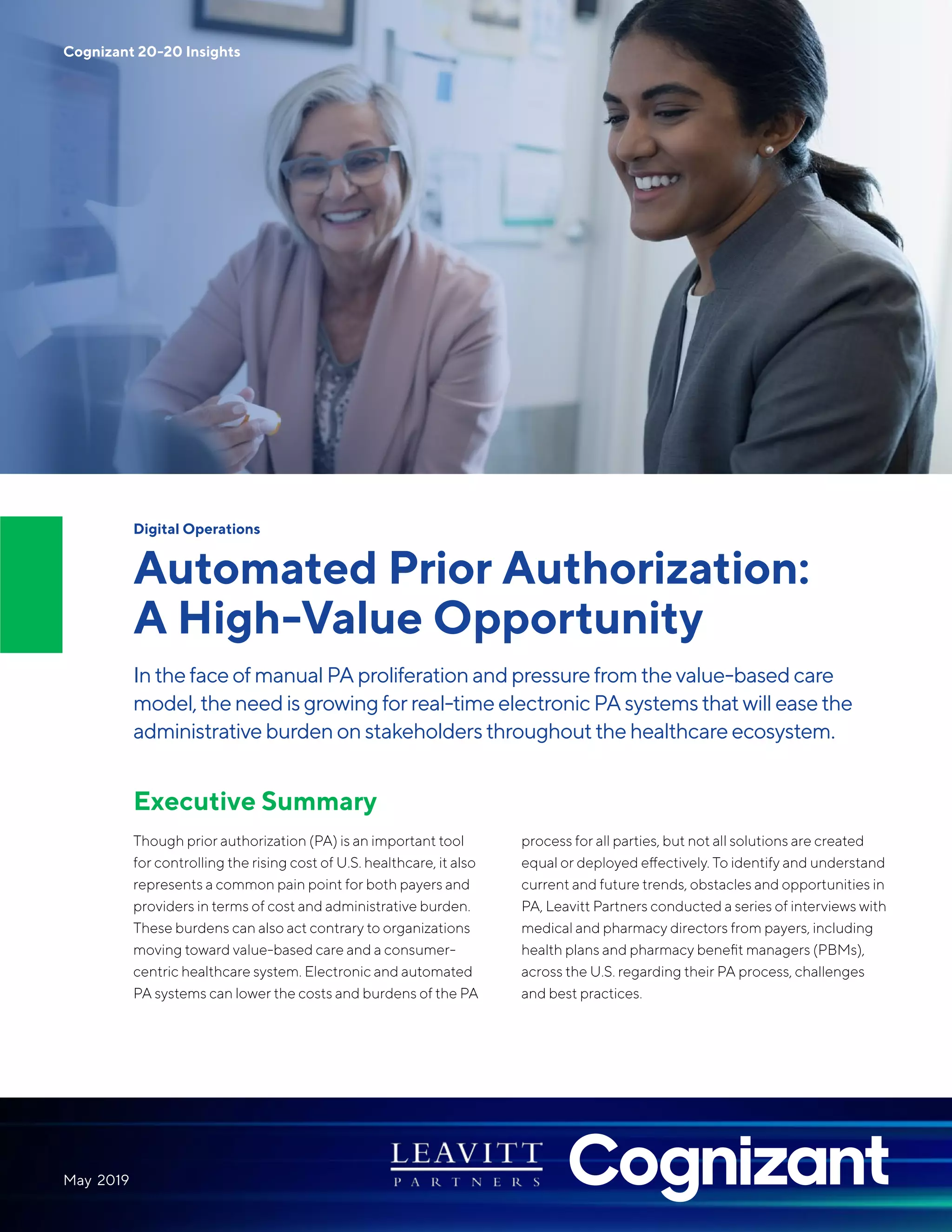The document discusses the significant administrative burdens and costs associated with the prior authorization (PA) process in healthcare, which is seen as a necessary but often cumbersome tool for controlling costs. It highlights the potential benefits of transitioning to electronic and automated PA systems, which could save time and reduce costs for both providers and patients, while also emphasizing that current adoption of such systems remains low. Interviews with healthcare stakeholders reveal a desire for more automation, but also a concern about the implications for patient care, particularly for complex cases requiring human intervention.











